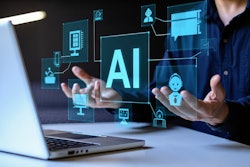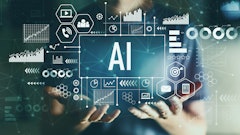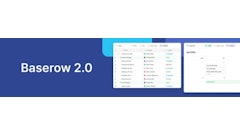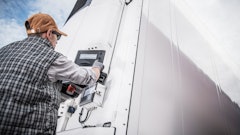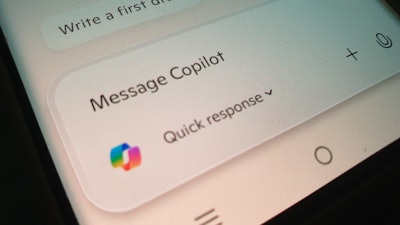
When you look at the headlines for “best jobs in America in 2025” or “What graduates seek in 2025,” you’ll see articles promoting jobs ranging from healthcare to IT to finance. Courses on engineering and computer science are ranked in first and second place.
But what you don’t see is graduates lining up for manufacturing jobs. Attracting and retaining talent concerns more than 65% manufacturers. By 2030, the United States is expected to have over 2 million manufacturing jobs sitting unfilled.
With an aging workforce and retiring operators taking decades of expertise with them, the industry risks losing quality assurance and competitiveness.
The very tools helping to bridge the shortage of skilled workers are the tools that will entice the next generation. AI copilots offer a chance to retain some of this know-how. Generative AI sits at the center of today’s most popular courses. It can learn various skills like parsing PDF manuals and producing step-by-step instructions. However, there are still many things it can’t do.
The supply chain space relies on today’s experienced veterans to get on board with adopting AI co-pilots, so they can oversee the implementation process and ensure these tools are trained properly.
Training the co-pilots
AI co-pilots can capture and preserve operator expertise, but veteran workers are essential in training them.
In concrete production, for example, moisture levels can vary batch to batch, especially in outdoor storage conditions where aggregates are exposed to rain or sun. Getting that water-to-cement ratio right takes a trained operator, who might grab a handful of sand, squeeze it, and gauge whether the moisture is off. They'll adjust the water manually, potentially recording their adjustments in their operator notes.
Tweaking water content based on gut feeling is still common, but this intuition leaves with retiring workers. AI-copilots are able to learn from each operator's modifications and retain this know-how. They take the historical data readings from each machine’s programmable logic controllers (PLCs), employ large language models to digest operators' notes, and use machine learning to analyze past adjustments and help standardize decisions in real time. Already, manufacturers are implementing full-scale projects using co-pilot platforms.
Where the veteran’s role is crucial is in ensuring that their best practices are captured so the next generation can make smart decisions. They need to be actively involved in testing the prototypes and labelling events as good or bad depending on the AI agent’s recommendation. It might take up to two months before the model can make reliable recommendations. Reinforcement learning will always be required from operators, but as long as that base knowledge layer is there, recommendations will stay relevant. Newer employees can flag changes as they come, and the model can keep learning and adapting.
Gaining veteran buy-in
Adoption won’t happen without buy-in from the operators. While co-pilot interfaces are becoming more intuitive, they still require a mindset shift. Like training any new hire, operators must learn to let go of the reins and, rather than making adjustments themselves, learn to interpret a suggestion, validate it, and feedback whether it was correct.
This kind of adjustment is not new for today's manufacturers. They already learned to adjust from hand tools to CNC machines and became proficient in G-code programming and CAD/CAM software. Now, the industry is embracing another change, with 80% fully or partially in agreement that AI and machine learning-powered facilities are on the horizon.
Veteran operators do not need to become data scientists either, but they do need to understand how these tools learn and where their judgment is still critical. One of the rising fears among workers is that 41.5% did not agree that it’s clear who is responsible when a product fails, the component supplier or the operators. This poses contractual and liability concerns for makers of complex products. Business leaders must ensure that the proper training and contracts are in place.
Short, hands-on training sessions focused on real scenarios, such as how to override a faulty recommendation or flag unusual equipment behavior, can help build confidence and trust in the system. Clear lines of responsibility and accountability also need to be made.
Combining these sessions with looped feedback between operators and data teams can significantly reduce resistance. When operators understand their role and how their input improves the model, they’re far more likely to engage with it actively. That feedback powers reinforcement learning, which teaches the system over time what success looks like on the floor.
Upskilling the next generation for human-machine collaboration
Graduates entering manufacturing with limited hands-on experience do not need 30 years of gut instinct, but they do need to understand how to work with the tools that simulate it.
Construction leads in terms of comfort with AI tools in the workplace (85.1% vs. 71.9% overall). Graduates joining the team must know how to operate a co-pilot, spot when its suggestions might be off, escalate edge cases, and collaborate with upstream engineering and data teams. Solace with AI logic, interfaces, and prompt-based interactions will become core competencies.
Text-based prompting remains the predominant interaction paradigm in generative AI. However, a 2025 study found two common challenges: difficulties in expressing intuition through prompts and limited opportunities for fine-grained adjustment and refinement during and after recommendation generation. We rely on graduates to learn prompt engineering skills, and for today’s creators of generative AI models to work closely with team members to advance their models accordingly.
One thing that won’t change is the appearance of change itself. Employers expect 39% of workers’ core skills to be different by 2030. Among the top ten skills for graduates are agility, motivation, and collaboration. The next generation of leaders will be those who encourage a culture of curiosity and adaptability. Many of these new hires will be change agents responsible for driving adoption among peers, spotting what the model is missing, and identifying new use cases. Giving them the space and tools to experiment will be key to scaling these systems beyond just early pilots.
Upskilling with AI co-pilots is already happening on factory floors. Veterans need to help train these systems, and new hires need to be fluent in how these tools work and how to question their outputs over time. The challenge is making this knowledge transfer practical. That means short, scenario-based training for experienced workers and giving younger employees technical exposure early. AI co-pilots can’t replace good judgment, but they can help scale it—if everyone knows how to use them.






